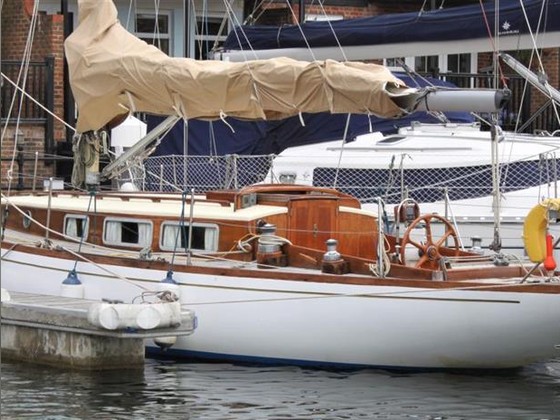Wooden boats

Everything You Need to Know About Wooden Boats
Introduction
Whether you’re an experienced sailor or a complete novice, there’s something special about wooden boats. These vessels have been used by humans for thousands of years, and their popularity endures to this day. We’ll explore everything you need to know about wooden boats, from their history and construction, to the best ways to enjoy them. So sit back, relax, and let’s set sail!
Wooden Boats: An Introduction
What are wooden boats
Wooden boats are boats made entirely of wood, or boats with a wooden hull and superstructure with other materials used for the remaining parts. The use of wood for boat construction is declining due to advances in alternative materials, but wooden boats are still built by hobbyists and professional boatbuilders.
History of wooden boats
The first known canoe was excavated from a peat bog in the Netherlands in 1907 and is believed to date back 8,000 years. Boats have been constructed from wood for millennia because it is strong, durable, and easy to work with. Early boatbuilding techniques were passed down through generations and varied by region. In North America, Native Americans used dugout canoes made from whole tree trunks while the Inuit people of the Arctic built kayaks with frames covered in animal skins.
Types of wooden boats
There are many different types of wooden boats, from small dinghies to large yachts. Common types include:
Canoes: Canoes are long, narrow boats that are paddled from a seated or kneeling position using a single-bladed paddle. They are stable and efficient for travel on calm waters and can be easily portaged over land between waterways.
Dinghies: Dinghies are small, lightweight boats that can be sailed or rowed and often have a detachable outboard motor for propulsion. They are used as tenders (smaller vessels used to transport people or supplies) for larger ships or as recreational vessels in their own right.
Rowboats: Rowboats are propelled by oarsmen sitting facing the direction of travel and using oars attached to oarlocks on either side of the vessel. They vary in size from small craft designed for one or two people to large passenger ferries capable of carrying dozens of people at once.
Sailing Yachts: Sailing yachts are larger vessels propelled by sails rigged on one or more masts. They range in size from small racing dinghies to massive ocean-going cruisers measuring over 90 feet (27 meters) in length.

Building Wooden Boats
The boatbuilding process
Building a wooden boat is both an art and a science. The first step is to choose the right plans. There are many factors to consider, such as the size and type of boat you want, your skill level, and the materials and tools you have available. Once you have the plans, the next step is to gather the materials. The most common wood used for boatbuilding is mahogany, but other woods such as cedar, oak, and pine can also be used.
After you have all of your materials, it's time to start building! The first step is to cut all of the pieces to size. This is usually done with a power saw, but if you're experienced with hand tools, you can use them as well. Next, you'll need to assemble the hull - this is typically done by gluing and screwing the pieces together. Once the hull is complete, you can add any additional features such as decks, bulkheads, or hatches. Finally, finish up by painting or varnishing your new boat!
Materials used in wooden boat construction
The most common wood used for boatbuilding is mahogany because it's strong yet lightweight. Other popular woods include cedar, oak, pine, and fir. In addition to wood, boats can also be made from fiberglass or composite materials such as carbon fiber.
Tools and equipment used in wooden boat construction
The type of tools and equipment you'll need will depend on the size and complexity of the boat you're building as well as your own skill level. However, there are some essential items that every builder will need including a power saw (for cutting wood), a drill (for making holes), clamps (to hold pieces together while they're being glued or screwed), and sandpaper (for smoothing surfaces). You'll also need a variety of hand tools such as chisels, hammers, screwdrivers, etc., depending on what type of work you'll be doing.
Caring for Wooden Boats
Maintenance and repair
Wooden boats require regular maintenance and occasional repairs to keep them in good condition. Maintenance tasks include cleaning the hull and deck, waxing the hull, lubricating moving parts, and checking for signs of wear or damage. Repairs may be needed if the boat sustains damage from impact, weather, or wear and tear.
Storage and winterization
When not in use, wooden boats must be stored properly to protect them from the elements. They should be stored in a dry, ventilated space out of direct sunlight. If the boat will be stored for an extended period of time, it should be winterized to prevent damage from freezing temperatures. Winterization includes removing all electronics and batteries, draining all fluids, and covering any exposed wood with a waterproof sealant.
Enjoying Wooden Boats
Sailing and racing
Wooden boats are beautiful and classic vessels that have been used for centuries for a variety of purposes. Today, many people enjoy wooden boats as a hobby or sport. There are a few things to keep in mind when sailing or racing wooden boats.
First, it is important to understand the different types of sails that can be used on wooden boats. The most common type of sail is the mainsail, which is attached to the mast and extends from the bottom of the mast to the top. The mainsail provides most of the power for the boat. Other sails include the jib, which is attached to the front of the boat, and the spinnaker, which is a large sail that is used when going downwind.
Second, it is important to know how to properly trim the sails. Trimming means adjusting the sails so that they are at the correct angle to catch the wind. This can be done by using ropes called sheets that are attached to each corner of the sails. If the sails are not trimmed correctly, they will not catch as much wind and the boat will not go as fast.
Third, it is important to be aware of other boats on the water while sailing or racing. Wooden boats are often slower than other types of boats, so it is important to give them plenty of room when passing by. It is also important to avoid collisions with other boats or objects in the water.
Fourth, it is important to know how to dock and launch a wooden boat safely. Docking means coming into contact with another object (usually a pier or another boat) while launching means getting underway from land or shallow water. Both docking and launching require careful planning and execution in order not damage either your boat or someone else's property.
By following these tips, you can enjoy sailing or racing your wooden boat safely and responsibly.
Conclusion
Wooden boats are a timeless and classic choice for those who love the water. Whether you're interested in sailing, fishing, or cruising, there's a wooden boat out there that's perfect for you. Building and caring for a wooden boat can be a rewarding experience, and with the right knowledge and tools, it's not as difficult as you might think. So if you're considering making the switch to wooden boats, don't wait any longer - jump on board and enjoy the ride!







